I have a lot of guys come to train with me to improve their vertical. One thing I notice amongst most of them, is that they’re not training the #1 factor for a higher vertical jump.
Today we’re getting into the details.
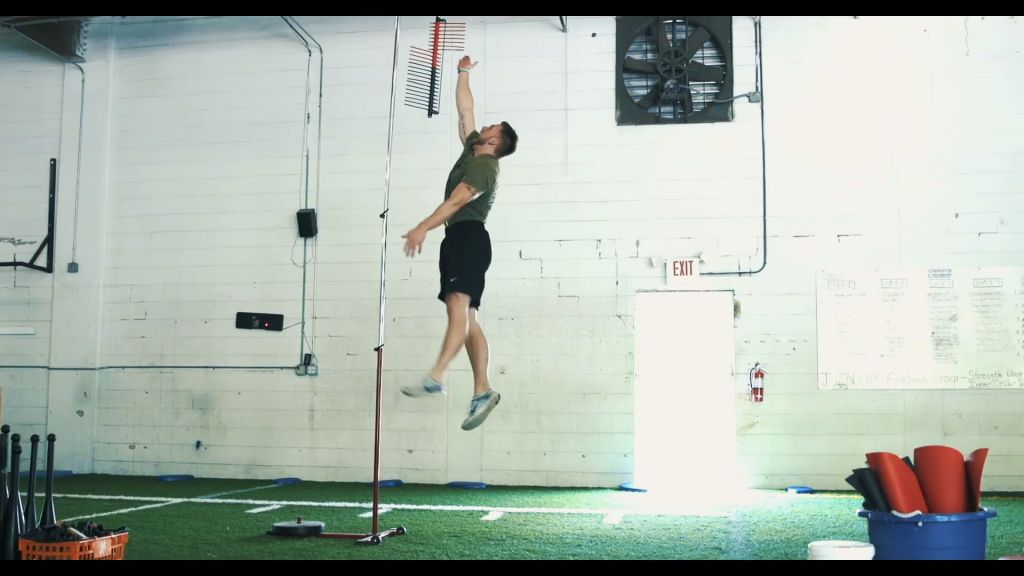
HOW TO PROGRESS VERTICAL JUMP TRAINING
Any athlete could tell you that reaching an elite vertical jump doesn’t come overnight.
It requires diligent strength training, lower leg agility, and a very important factor that doesn’t get discussed often…
When we break down the action of a jump, there’s essentially two phases:
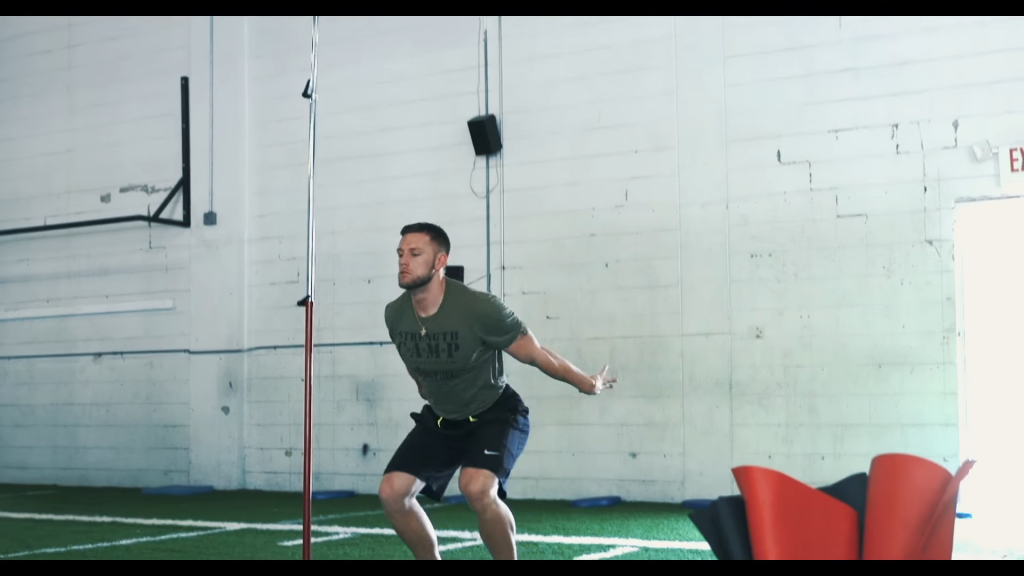
- PHASE 1: The eccentric phase occurs first as you come down into a quarter squat position or an “athletic stance.”
- PHASE 2: The second phase is going to be concentric or your “takeoff.” This is where you produce all the force which carries you vertically.
A lot of people tend to only focus their training on the concentric portion.
However, this is where I tend to differ my training approach and where my athletes work on the #1 factor for a higher vertical jump.
When I work with an athlete looking to jump higher, I focus on the eccentric phase. This is where you gather up the power to create a powerful takeoff.
As with any training, you guys know I always love to isolate then elevate.
I suggest moving in a progressive manner by selecting a few basic exercises and perfecting them prior to any advancements.
An athlete should always look to master the simple mechanics of whatever it is they’re working on. Only then should you start to slowly implement more advanced techniques.
To increase overall performance, it’s essential to build a strong foundation from which we can grow.
Think of this as continuously applying stress to the body, recovering, and then translating that new strength into more advanced elements of training.
FORCE ABSORPTION FOR A HIGHER VERTICAL
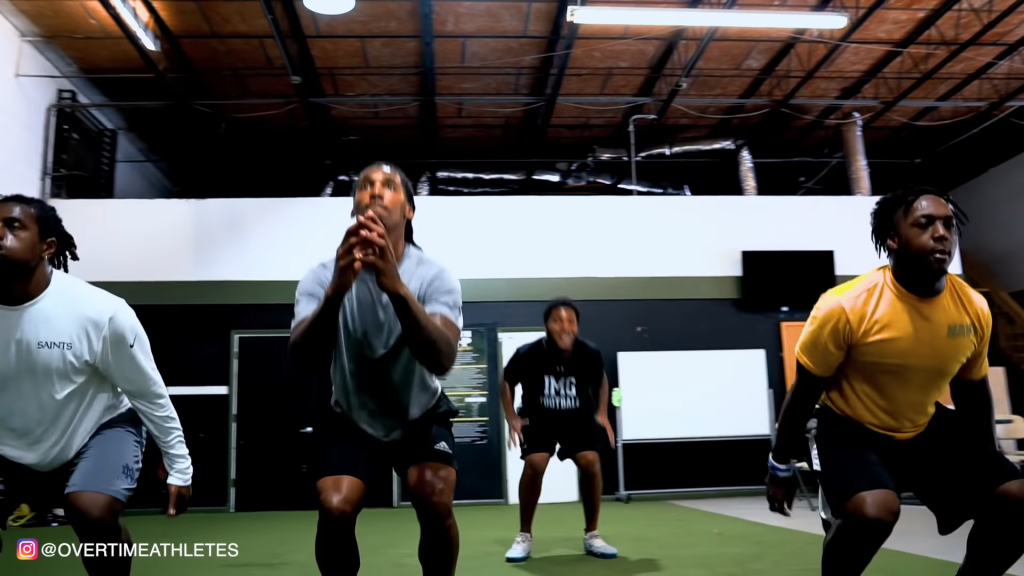
Your progression through vertical jump training will be dependent on your current ability and a few other factors specific to you.
This same principles apply as you perform the #1 factor for a higher vertical jump: force absorption.
Whether you’re training to sprint faster or jump higher, every athlete needs to progress through training that allows you to properly absorb force.
Force absorption allows you to improve upon the first phase of your jump or the eccentric portion (as you squat down).
If you simply train the takeoff, you’re missing out on the opportunity to cultivate a ton of power before your feet even leave the ground.
I’m going to share a basic drills and their progressions, which help to improve upon the #1 factor for a higher vertical jump.
Even though these might not be the most complex drills, if you do them properly and with intensity, they’ll make a serious difference in improving your vertical.
1. Drop Squat

HOW TO: Begin from a standing position with the feet directly beneath the hips. Take a small jump, and then immediately land in that low squat position focusing on “sticking the landing.” You’ll essentially free-fall, catching yourself at about 90 degrees.
Avoid any bouncing or sinking lower after you catch yourself.
Eventually you can progress to landing in more of a quarter squat, where there’s less of an angle between the shins and the floor.
2. Squat Drop with Resistance
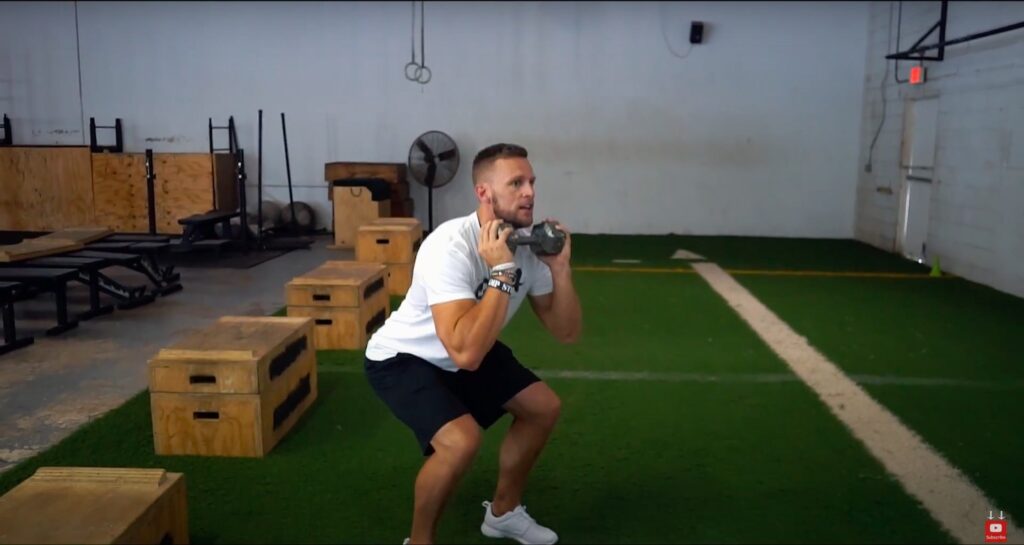
Once you’ve really mastered this drill, you can move on to adding resistance either in the front loaded or axial position.
Perform the drill the same way, making sure that you still stick the landing maintaining that eccentric position. Hold your squat at the bottom for up to two seconds without sinking under the weight.
3. Depth Jump
Depending on your skill level, choose the proper starting height for this.
The higher you begin, the more energy you’ll absorb at the bottom of your depth jump.
It’s all dependent on gravity pulling you down at varying rates. The more force you absorb on the ground, the more you increase your ability to create force.
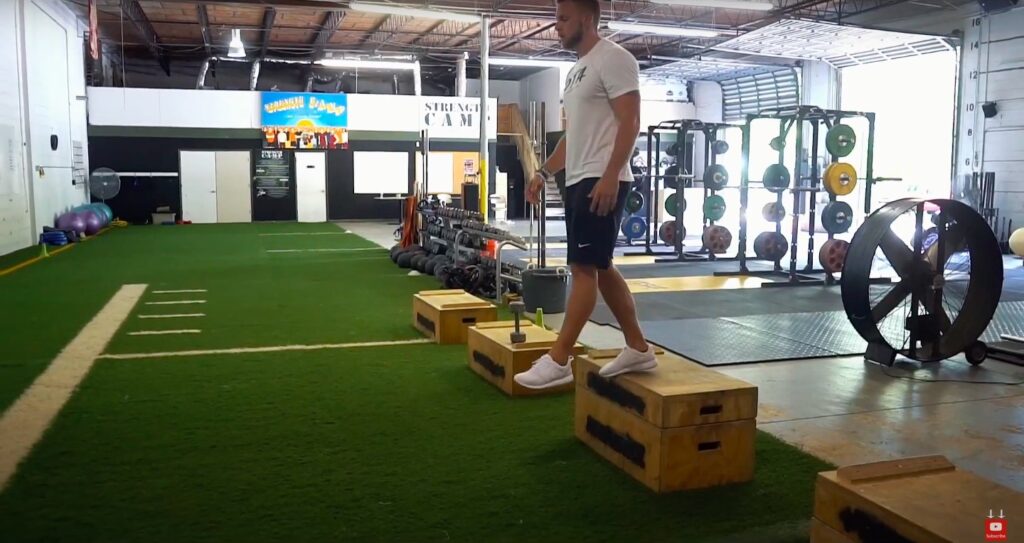
HOW TO: Begin standing on a plyo box. Step off the front and land with both feet under your hips in that same 90 degree squat position. Avoid sinking any lower and maintain that low position for a few moments .
Overtime you can begin to increase the depth of your jump by increasing the height of the box from which you start.
4. Rebound Jump
To progress this depth jump even further, you’ll start off the same way by standing on a plyo box and stepping off.
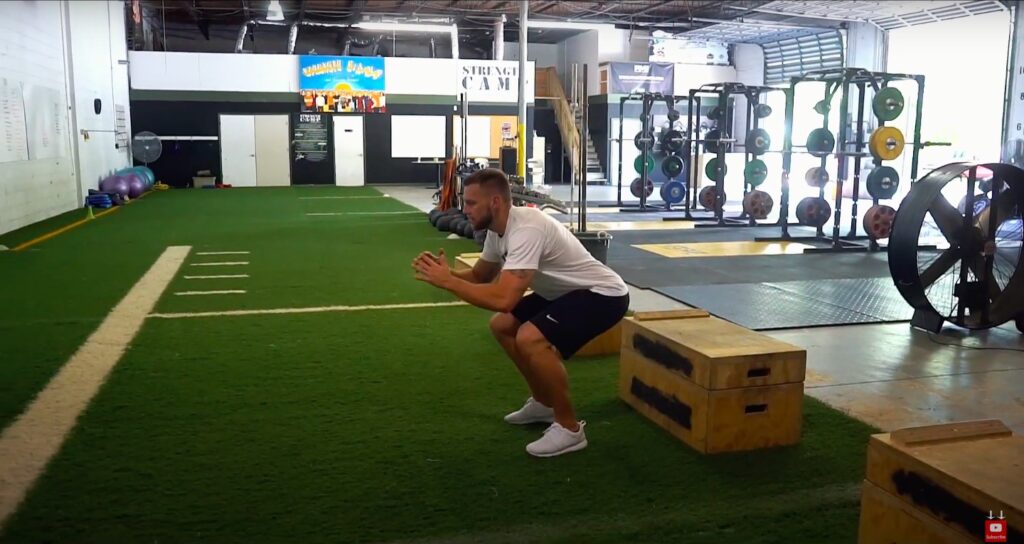
This time, once you hit the ground you’ll immediately explode and jump up with as much power as possible.
For more specifics, check out The 5 Best Drills to Increase Vertical Jump
THE #1 FACTOR FOR A HIGHER VERTICAL JUMP
Along with your strength training regime, begin to add in a few of these basic drills to your lower body programming a few times a week.
To truly master an elite vertical jump, you need to follow a well-designed plan based on research and experience.
I’ve spent years looking to add on those extra inches myself…
Over time as an athlete and coach, I’ve been able to focus on the key factors which have helped me achieve a 44″ vertical.
That’s why I’ve finally put together my newest program:
If you’re looking to improve your game as an athlete, sign up to be notified for the release of the newest and most up to date vertical jump program on the market.
